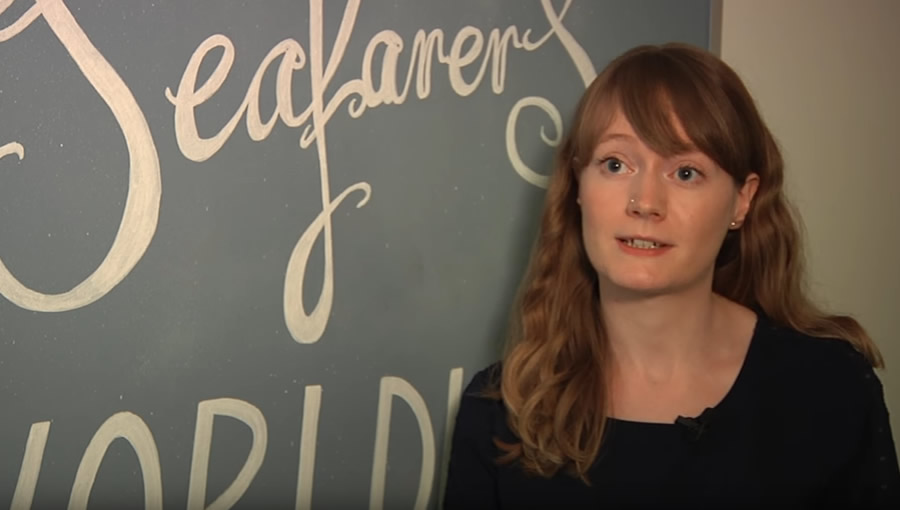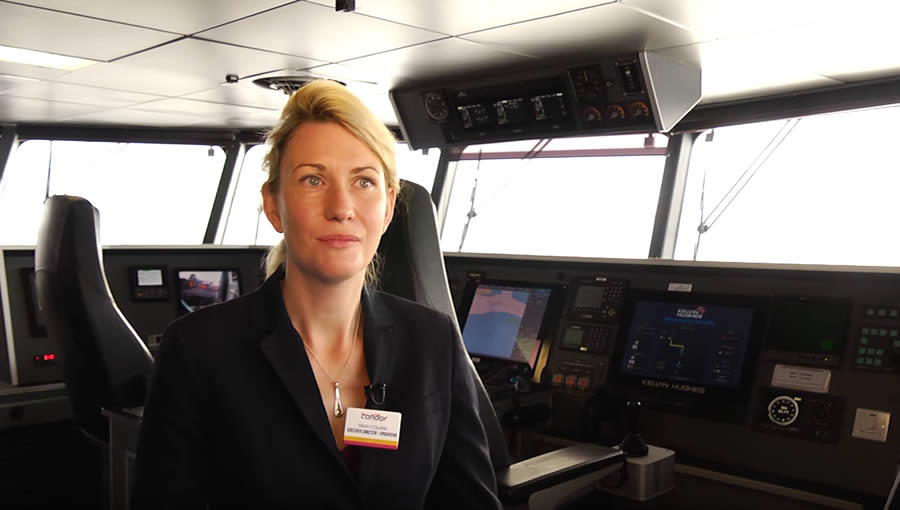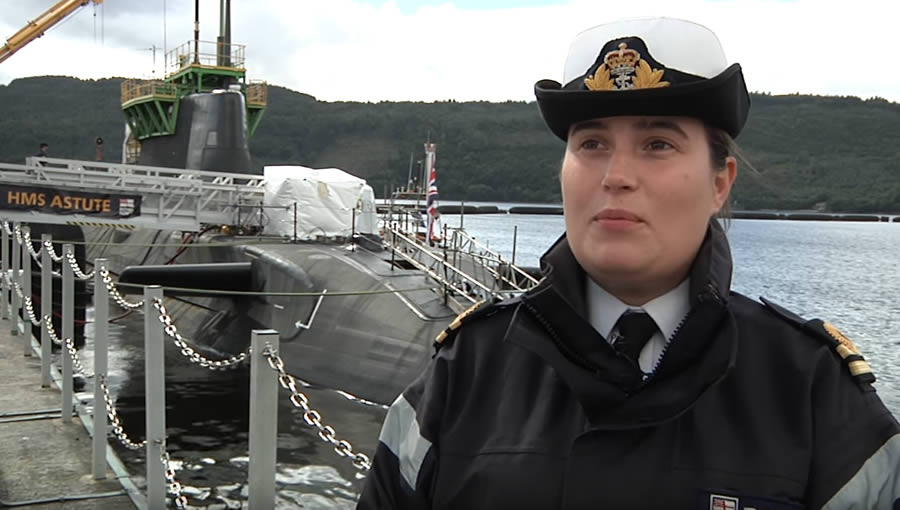And, for sure, maritime careers aren’t necessarily about being officer or crew member, either. This (picture) is Emily Lennox, whose career path underlines the point that women should consider related trades too. Emily’s a Graduate Naval Architect with Babcock International Group, working on what must be the most exciting shipbuilding project Britain has undertaken in recent years: constructing the two giant aircraft carriers Queen Elizabeth and Prince of Wales, building at Rosyth on the Firth of Forth. (Emily is on the flight deck of PoW.) It’s a challenge she seized with both hands – and a sense of humour: apparently some of her friends thought “naval architect” meant “navel architect” – that is, something to do with belly-button piercing. No, really… That just made Emily laugh. But then, I think it would take a lot to put her off her stride!
Architectural Emily






